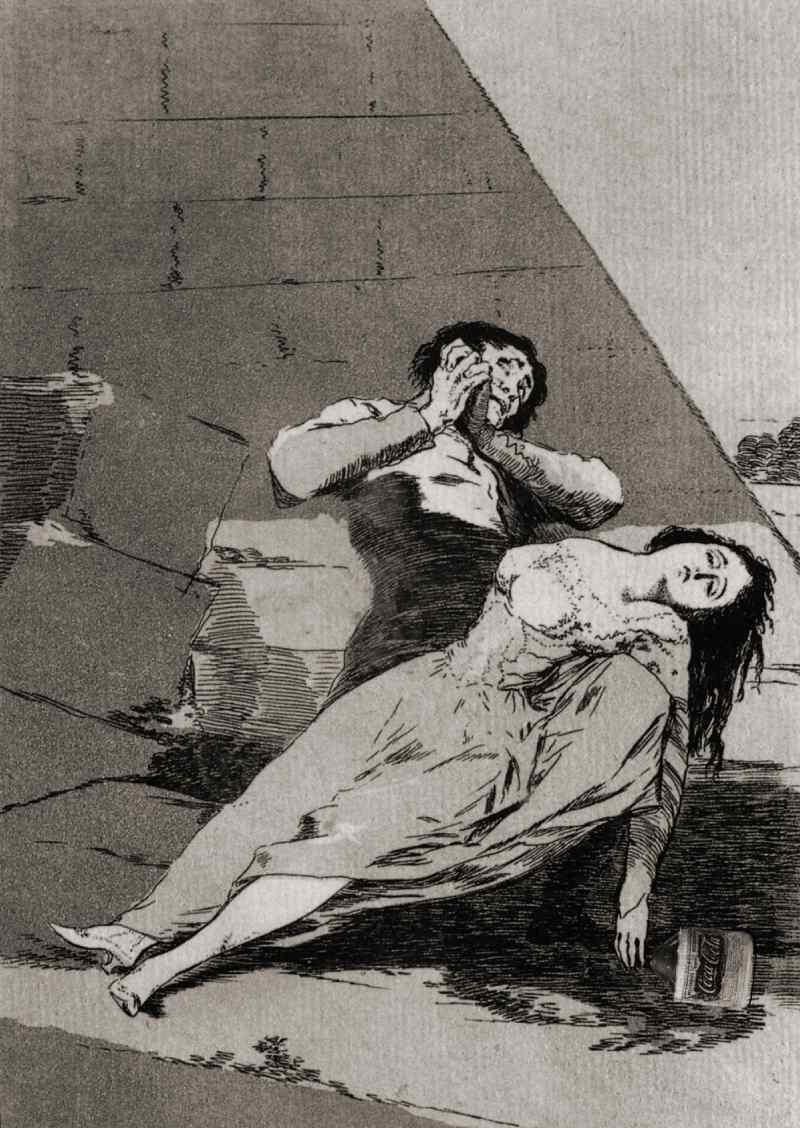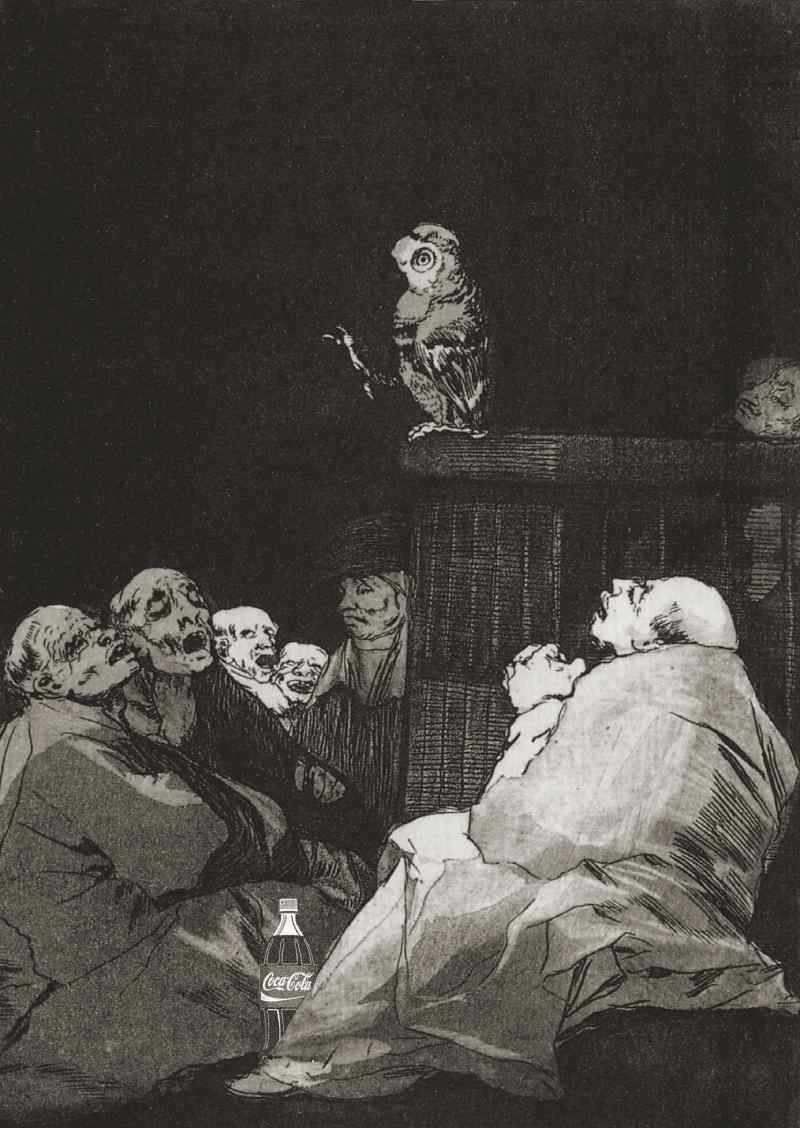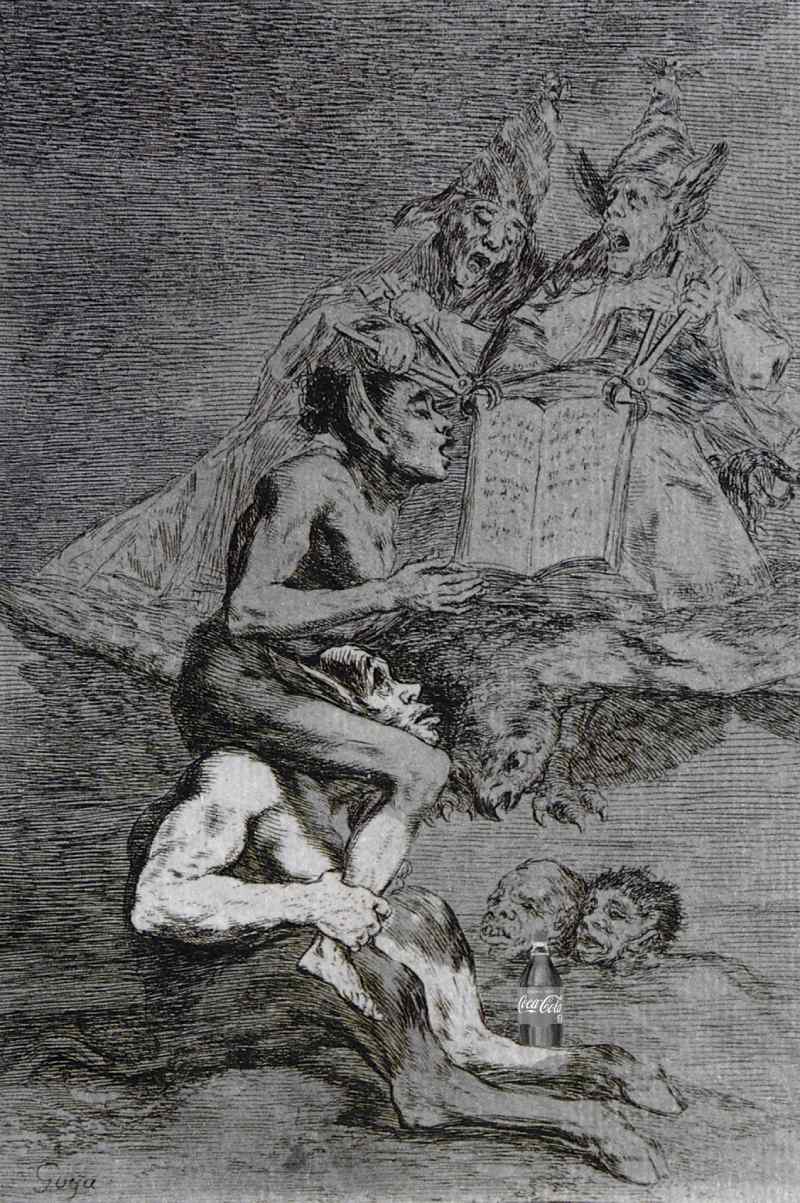Goya Reborn in Water | Aquatint Etching Prints with a coke | A Plastic Pollution Protest
Author: Distil Ennui | Post Date: 07-08-2025Goya Reborn in Water: An Etched Dialogue Between Past and Present
Francisco de Goya (1746–1828), often hailed as the “last of the Old Masters and the first of the moderns,” transformed printmaking through his mastery of etching and aquatint. Born in Fuendetodos, Aragon, Goya became court painter to Charles III and later Charles IV, yet it is his stark series.. Los Caprichos, The Disasters of War, La Tauromaquia and Los Disparates.. that immortalised his unflinching social commentary. Working on copper plates, Goya scratched his lines through an acid-resistant ground before biting tonal washes via powdered resin in an acid bath, a technique known as aquatint, which enabled him to evoke brush-like nuances of ink and wash in multiples Encyclopedia BritannicaNational Gallery of Art.

In “Plate 53 ¡Qué Pico de Oro!” from Los Caprichos, Goya satirises hollow rhetoric with a choir of gaping mouths focused on a hooting owl, emblem of folly. In “Plate 70 – Devota profesión,” the artist’s skeletal demons obsess over doctrinal texts, each line and tonal field etched by his own hand. Today, these iconic images have been scanned from original plate prints and reframed: hovering beside the resigned figures is a single-use plastic Coca-Cola bottle. This anachronistic insertion is no mere novelty; it underscores a contemporary “social contribution” akin to Goya’s, reframed for an era of corporate induced ecological crisis.
My “Goya reborn in water” exhibition reprises the monastic rigour of early 19th-century print workshops. Figurative subjects in hand made gowns are submerged in custom tanks of purified water; brushwork & the artists bare hands on the surface of the water sculpts refracted light onto each plate before the analogue 8×10″ film plates are hand-processed and printed by the artist in the studio without digital intervention. All materials, from the models’ garments to crucifixes—are handcrafted, echoing Goya’s devotion to manual processes and moral purpose Goya Reborn in Water.

Water, in my 1987 artist manifesto, is “the new oil.” As 1.6 billion plastic bottles are produced daily worldwide, with less than 5 percent ever to be downcycled (there is no such thing as up cycling with plastic as it continually degrades; single-use packaging pollution now rivals the “disasters of war” in its silent devastation.
Goya’s etchings confronted the Napoleonic horrors that ravaged Spain; my re-interpretations confront the chemical scourge that ravages our oceans and bodies. The plastic bottle in each print stands as a modern grotesque, as potent as Goya’s spectres, calling viewers to reckon with humanity’s own capacity for destruction and renewal.
The exhibition at Castillo de la Piedra Bermeja, Brihuega, situates these works within an ancient fortress, its thousand-year memory resonating with Goya’s conscience-shaking murals at the Quinta del Sordo. Visitors pass through a cemetery before entering the gallery, mirroring the ritual passage from mortality to transformation that both Goya and I invoke. Here, each analogue plate like Goya’s exist as a singular artefact of incalculable provenance, resisting the age of mechanical reproduction pomona.eduThe Metropolitan Museum of Art.

By bridging historical technique with ecological urgency, “Goya reborn in water” offers an art-historical dialogue that Goya himself would have endorsed: art as witness, art as indictment, and art as testament to enduring relevance. As we navigate the tidal wave of plastic pollution, these submerged etchings ask us to heed both the memory of the past and the imperative of the future.
You can find a selection of these prints availabe from just €22.00 on the Distil Ennui exhibtion page. As with Goya´s originals these are printed true to the original plate size 14 x 20 cms 5.5 x 76.9inches as a non-edition print on Museum conservation Bamboo paper